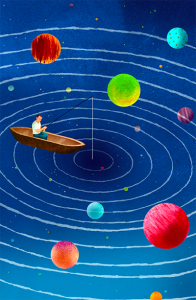Earth Magazine
 Review by Lewis (Earth Sciences)
Review by Lewis (Earth Sciences)
Earth Magazine is an interesting and engaging piece of media encompassing a wide variety of topics within Earth sciences including volcanology, palaeontology, climatology and many more, allowing any reader to gain a deeper understanding of current research and development in the science behind some of the world’s most important issues.
I really enjoyed reading multiple publications of this magazine whilst studying my A-levels and I believe that the knowledge I gained from them was what inspired me to pursue a degree in Earth sciences and led me to form greater interest in the topics I enjoy studying right now. Earth Magazine contains plenty of impressive images and statistics to go along with its easy-to-read articles, which are relatively small, allowing the magazine to fill time easily even during a busy schedule, or even feel more like leisure reading whilst also being intellectual. What first drew me to read the magazine was its standout cover on the shelf of my college library, including an eye-catching photograph with the titles of key articles, some of which included “Iceland’s Volatile Volcanos, Seeing the Seafloor in High Definition”, and “The Origins of Plate Tectonics”. Not only are there highly scientific articles, but also ones tackling a more human perspective, looking at how we have adapted to overcome geological hazards such as earthquakes or tsunamis, and how we are changing our view of the world due to the impact of climate change, also making this a great text for students interested in the social sciences!
One article that really inspired me to read more around the topic (so much that I included it in my personal statement), was “Hazards in Paradise: Indonesia Prepares for Natural Disasters”, which struck my interest due to its in-depth look at how exposure to volcanic activity, earthquakes, and landslides is being mitigated, and how new and exciting plans are being put in place to reduce the risks that local communities face. The article takes twists and turns from a catalogue of information about the geology of Indonesia and why it can be such a surprisingly dangerous place, to explanations of the steps being taken by international collaborations to tackle the risks and do important research which can help other regions of the world struggling with similarly hazardous environments.
In summary, Earth Magazine is an amazing collection of everything Earth sciences has to offer, and gives the reader a chance to explore many different topics that reveal the real world applications of the science you learn in the classroom.
See earth.nautil.us
